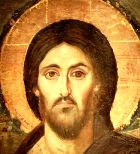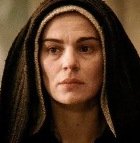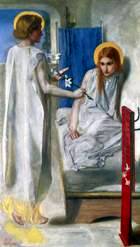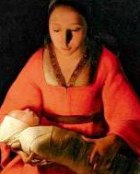Jesus on the cross – famous paintings
Questions for Bible study groups
- Which of the paintings below affects you the most? Why?
- Do different paintings of the Crucifixion offer different messages to the viewer?
- If you had to choose one of these paintings for your church, which would you choose? Why?
- Towards the bottom of the page you’ll see a section on Hidden Meanings in paintings of the Crucifixion. Skim through these and note any hidden meanings you hadn’t noticed before. What are they?
In brief: The crucifixion of Jesus was a central event in the gospels. Some painters glossed over the horrifying details, presenting a glorified Christ; others showed the agony of crucifixion. They showed Jesus alone in his final moments or surrounded by anguished disciples. See Hidden Meanings for more on the way that artists depicted crucifixion.
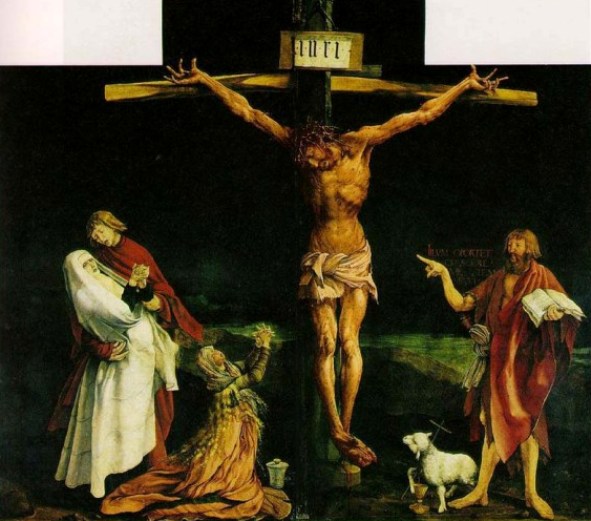
Crucifixion, Matthias Grunewald
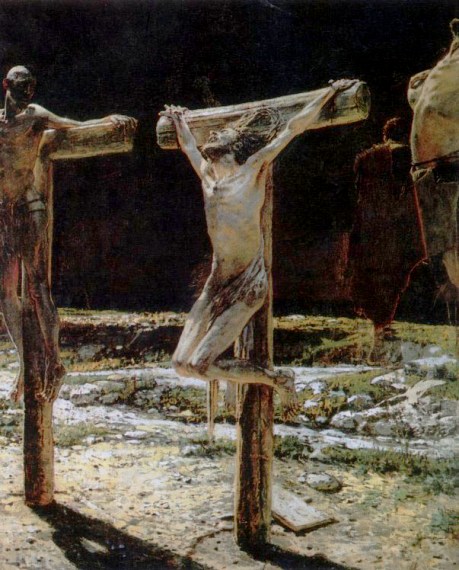
Crucifixion, Nicolai Ge
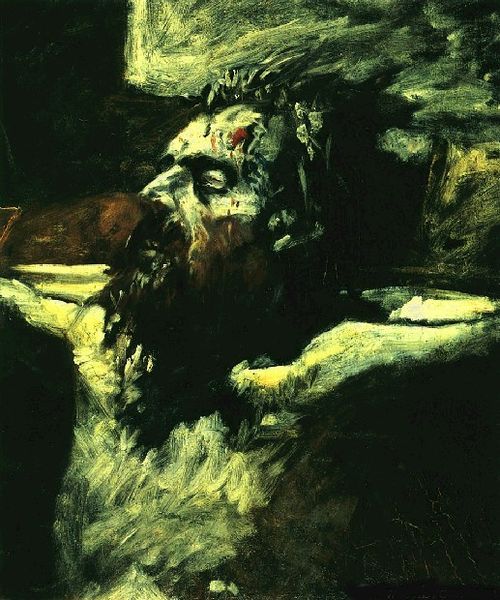
Preparatory sketch for Christ in ‘Calvary’
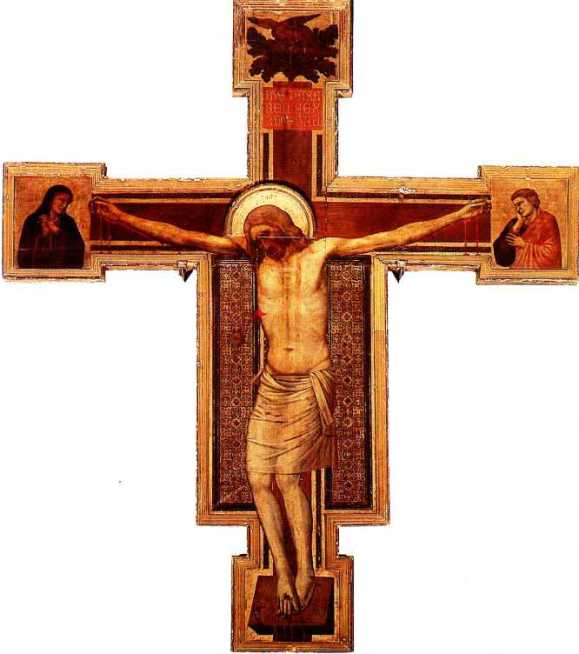
Crucifixion, Giotto
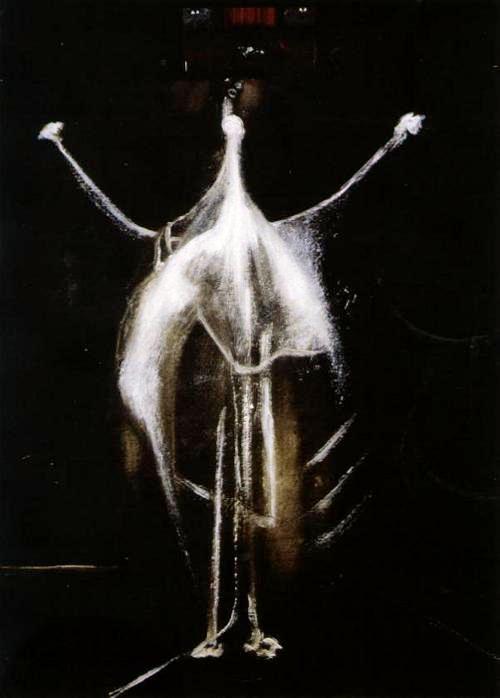
Crucifixion, Francis Bacon, 1933
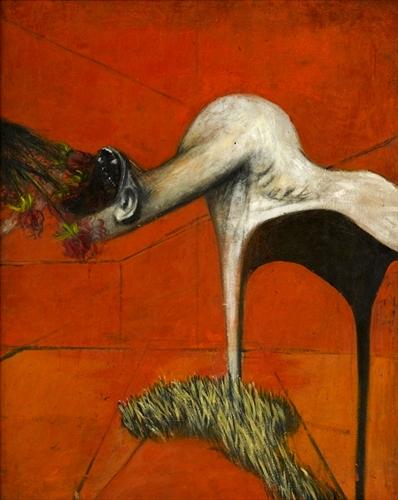
Study for a figure at the base of a Crucifixion, Francis Bacon
The figure at the foot of the cross is horrific: half-human, half-beast. Its screaming mouth protests against man’s inhumanity to man. Some critics say that Bacon’s inspiration for this image came from the wounded nurse in Eisenstein’s 1925 film Battleship Potemkin – see the movie clip of this scene. The gaping mouth breathing black air may also reflect Bacon’s severe asthma,
which eventually killed him in 1992.
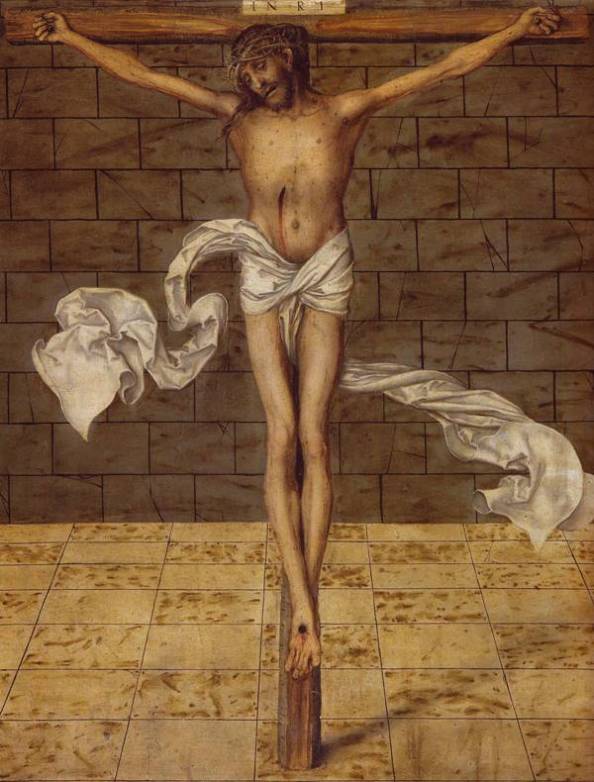
Crucifixion, Lucas Cranach the Elder, Altarpiece of the Sacraments
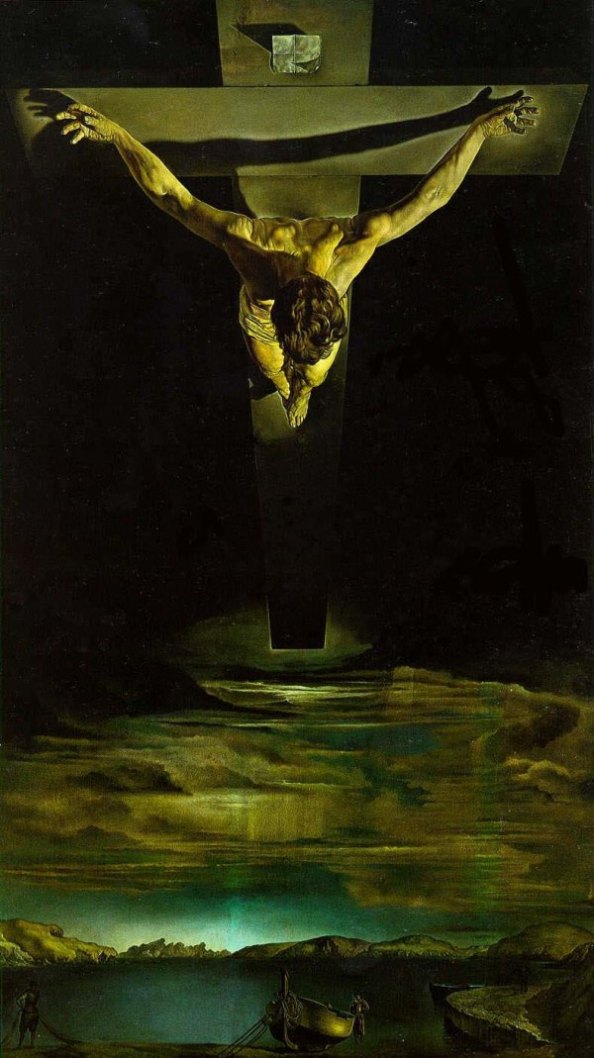
Christ of St John of the Cross, Salvador Dali
Hidden meanings in Crucifixion paintings
- In Roman times crucifixion was a widely used form of capital punishment, reserved for baser criminals and slaves. It was probably carried out differently from the way it is presented in art. At the site of the execution the upright post was already set into the ground; it could be used many times.
- The condemned man was led to the place of execution carrying only the horizontal piece to which his hands were already tied to prevent resistance. On arrival his hands (or wrists) were nailed to the ends of the cross-bar which was then lifted on to the upright. It either rested across the top, to form a ‘T’ or was set somewhat lower down, forming the familiar crux immissa (intersecting). In either case the pieces were secured by some form of mortise and tenon. Finally the feet were nailed to the upright.
- The early Church avoided images of the Crucifixion, because they showed that Jesus had died as a criminal.
- At the time when Christianity was forbidden by the Romans, the crucifixion was represented symbolically by the lamb of Christ juxtaposed with a cross. Even after the age of Constantine the Great, when Christians were allowed to practise their religion without interference, the cross itself was still represented without the figure of Christ.
- Later paintings show Jesus on the cross, but no-one else nearby; they were aids to devotion, a focus for prayer, not pictures of the scene.
- Other paintings tell the story of the Crucifixion; they are crowded with people, as in the work of Italian Renaissance artists. There were figures from the gospels who became a permanent feature of the crucifixion: the Virgin Mary and St John the Evangelist, the centurion and the sponge-bearer, the two thieves, the soldiers casting lots.
- For many centuries Christ was shown alive and open-eyed, a triumphant Saviour wearing a royal crown. In the 11th century however there appeared a new type, the emaciated figure with its head fallen on one shoulder and wearing a crown of thorns.
- In art up to the 13th century the usual number of nails was four (including one for each foot), but after this it was usually three, (one foot nailed over the other).
- In antiquity an inscription stating the nature of the condemned man’s offence was hung round his neck as he was led to execution, and was afterwards fixed to the head of the cross. John (19:19-20) tells how Pilate ‘wrote an inscription to be fastened to the cross; it read, “Jesus of Nazareth King of the Jews” . . . in Hebrew, Latin and Greek.’ In Renaissance art it is usually given in Latin only, ‘Iesus Nazarenes Rex Iudaeorum’, abbreviated to `INRI’.
- The medieval Church debated whether Christ was naked on the cross; in ancient Rome this was standard practice. Usually he is shown with a thin band of cloth extending round the waist and under the crotch. The loincloth was an invention of artists in the early Middle Ages.
- The two thieves were crucified with Christ, one on each side. Luke adds that one rebuked the other saying that their punishment was deserved whereas Christ was innocent, and was told by the Saviour, ‘Today you shall be with me in Paradise.’ Art distinguished between the penitent and impenitent thief. The good is on Christ’s right (the ‘good’ side); his expression is peaceful where the other’s is anguished. The names by which they are generally known, Dismas and Gestas (good and bad), are taken from the apocryphal Gospel of Nicodemus.
- The soldiers who crucified Christ divided his clothes into four parts, one for each soldier. Of the seamless tunic, woven in one piece, they said, ‘We must not tear this; let us toss for it.’ They are either at the foot of the cross or in a corner of the picture. One is in the act of throwing dice while the others look on.
- The Virgin and St John stand by the cross. This scene was originally intended to express the scene from John’s gospel (19:26-27) in which Christ, while he still lived, entrusted the Virgin to the care of the apostle John. The Virgin stands on the right of Christ, St John on the left. Their heads are inclined. She may have raised her left hand to her cheek, supporting the elbow with the other hand, a traditional gesture of sorrow dating back to Hellenistic times.
The Virgin swoons into the arms of the holy women. There is no mention of this in the gospels – it is a creation of later medieval preachers and writers. They assumed that she was overcome with anguish, and suggested she swooned three times: on the Road to Calvary, at the crucifixion and after the descent from the cross. - In early paintings Mary Magdalene wears a red cloak. Later she appears richly attired and with her usual copious hair, kneeling at the foot of the cross or embracing it in passionate grief. She may kiss the bleeding feet or wipe them with her hair.

